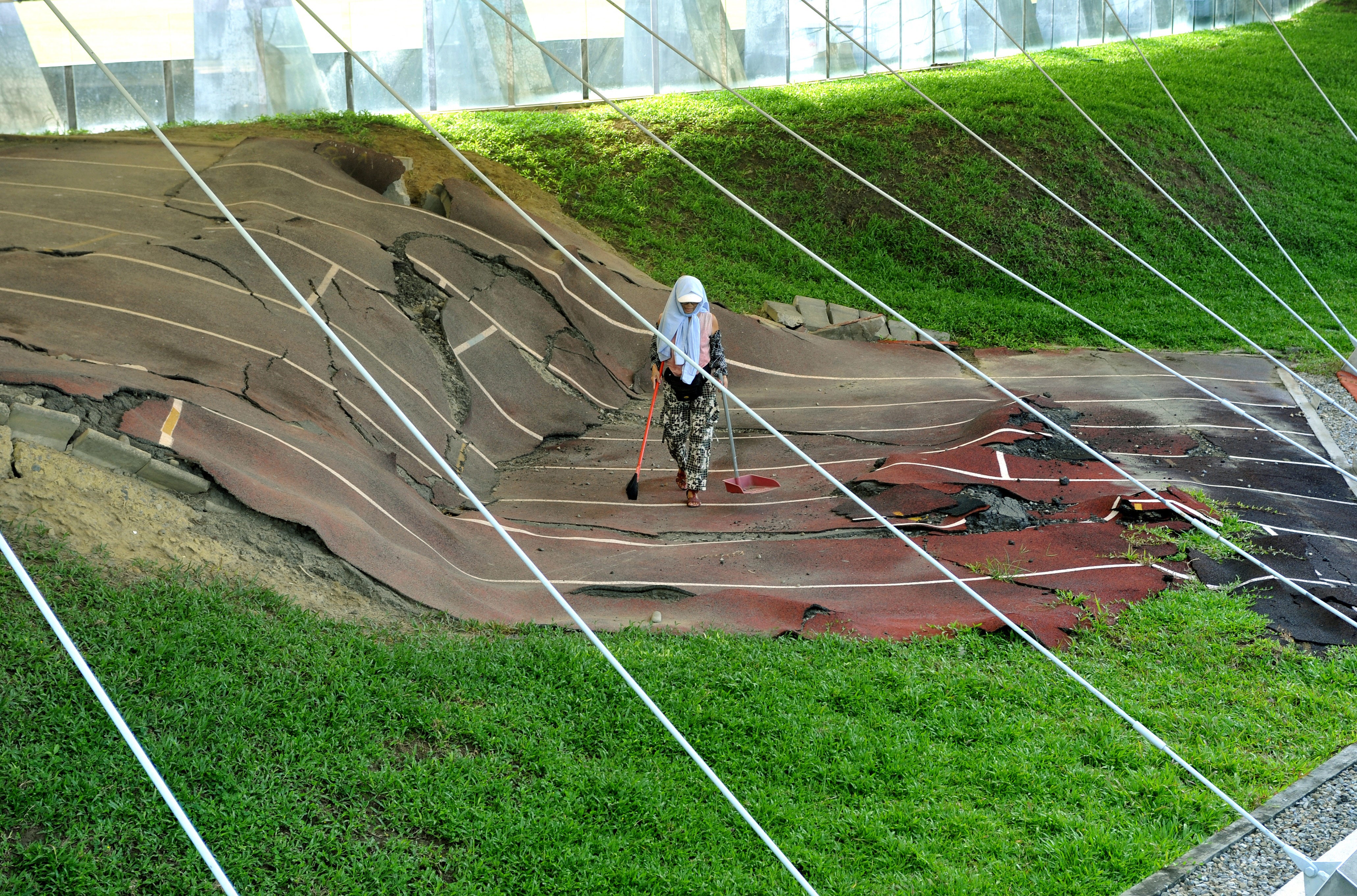
Two hours before a large earthquake, the ground seems to move—infinitesimally and without causing any shaking—a new study shows. This movement, known as an aseismic slip, may be a potential pathway toward predicting damaging quakes before they happen, the researchers say.
Many seismologists have long argued that earthquakes are impossible to predict because Earth’s crust doesn’t give any detectable warning before it snaps. The new study, published on Thursday in Science, suggests that there are in fact warning signs. They’re just very, very subtle. “It’s solid evidence that there is something happening before large earthquakes,” says study co-author Quentin Bletery, an earth science researcher at the French National Research Institute for Sustainable Development (IRD) at the Côte d’Azur University. “It doesn’t mean that we know how to predict them, but it means that it’s physically possible.”
But just because there is a pattern of events before an earthquake doesn’t mean the new finding itself will amount to a prediction method, warns Lucy Jones, a seismologist and founder of the Dr. Lucy Jones Center for Science and Society. The patterns seen in the aseismic slip are similar in many ways to the patterns seen in foreshocks—smaller quakes that happen before major temblors. Seismologists once hoped they could use foreshocks to predict big earthquakes, says Jones, who was not involved in the current study. But that hasn’t happened. As it turns out, after any given earthquake, there’s a 5 percent chance that a larger one will follow. It’s not clear that a quake is a foreshock until a larger quake happens. The same problems will likely plague the use of aseismic movement for predictive purposes, Jones says. “Their analysis requires knowing the main shock,” she says. “To be useful in any sort of predictive thing, you have to figure out how you do it [without] knowing that the main shock is coming.”
An aseismic slip is ground movement that occurs without producing seismic waves. These events are sometimes called “slow earthquakes” because they can displace the ground by the same amount as an earthquake might—but the slip movement happens so gradually that there are no jolts, shocks or tremors. Still, the movement is significant enough for researchers to detect using GPS sensors.
To find out if faults show any changes in slip behavior before earthquakes, Bletery and his co-author Jean-Mathieu Nocquet, a fellow IRD researcher, combined data from 3,026 GPS stations near the centers of 90 earthquakes of magnitude 7.0 or greater. Each station automatically recorded its exact location every five minutes, and the researchers analyzed the 48 hours prior to each quake. They looked at the amount and direction of displacement for each station and tried to detect any patterns in the signals.
For the first 46 hours of the 48-hour period before each quake, they saw no patterns. But in the last two hours, they saw an exponential acceleration in the horizontal movement of the sensors. “This last [data] point is twice as large as the maximum of the first 46 hours,” Bletery says, “so it’s very unlikely that it just happens by chance.”
To confirm this signal was specific to earthquakes, the researchers used the same method on 100,000 random 48-hour periods that did not precede a quake. They saw increases in the final hours in only 0.03 percent of the samples, providing a rough estimate of the likelihood that this pattern would occur randomly.
The average amount of energy released in slow slip was similar to that caused by a magnitude 6.3 earthquake, even though there was no shaking. (The exact distance of ground movement that occurs in a magnitude 6.3 quake can vary, and the researchers couldn’t calculate these measurements—only the energy released by the motion.) It seems that before a fault breaks and causes an earthquake, Bletery says, there is a slow slide of crust against crust that acts as a precursor.
But the slide pattern is subtle, and the current analysis required more than 3,000 widely distributed sensors to uncover it. To detect these silent changes at a single location on a single fault would require sensors at least 100 times more sensitive than what is available today, Bletery says.
Even then, such a feat is likely impossible, Jones says. The researchers discovered the slow slip by summing up all the data across separate stations and using the timing of the main shock as the benchmark event. The exponential growth pattern seen across stations makes sense, she says, because when you start with the moment of a big earthquake, there’s a high probability that something interesting might be happening within the few minutes before or after it—just as foreshocks and aftershocks are most likely to occur very close in time to the main quake. This probability trails off exponentially as you get further away in time from the event, whether you’re going forward or backward.
This pattern holds while analyzing many earthquakes at once, because for each quake, you’ve chosen to start looking in the moment when things are at their most interesting—but that doesn’t mean a single quake in a particular location will be heralded by an exponential increase in silent slip, Jones says.
“It doesn’t give you a precursory, predictive ability because it’s a statement of how you’ve summed it rather than what’s going on at a particular earthquake,” she adds. “‘I see this before main shocks’ and ‘I see this and know what’s coming’ are completely different questions.”
Stay connected with us on social media platform for instant update click here to join our Twitter, & Facebook
We are now on Telegram. Click here to join our channel (@TechiUpdate) and stay updated with the latest Technology headlines.
For all the latest For News Update Click Here
